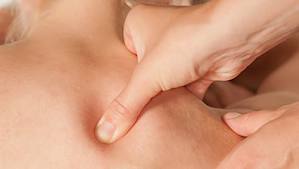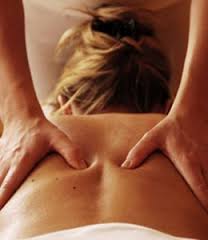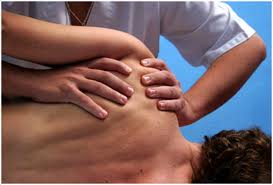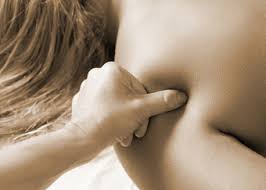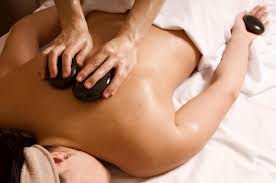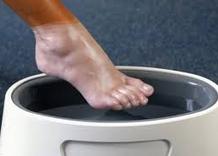CALL 425-248-0281
Call or text today to schedule your appointment at 425-248-0281
Deep Tissue Massage
Deep tissue massage is a type of massage therapy that focuses on re-aligning deeper layers of muscles and connective tissue.
Adhesions can block circulation and cause pain, limited movement, and inflammation. Deep tissue massage works by physically breaking down these adhesions to relieve pain and restore normal movement.
At certain points during the massage, most people find there is usually some discomfort and pain. It is important to tell the massage therapist when things hurt and if any soreness or pain you experience is outside your comfort range.
There is usually some stiffness or pain after a deep tissue massage, but it should subside within a day or so. The massage therapist may recommend applying ice to the area after the massage. It is important to drink plenty of water as you can after the massage to flush metabolic waste from the tissues.
According to the August 2005 issue of Consumer Reports magazine, 34,000 people ranked deep tissue massage more effective in relieving osteoarthritis pain than physical therapy, exercise, prescription medications, chiropractic, acupuncture, diet, glucosamine and over-the-counter drugs.
Deep tissue massage also received a top ranking for fibromyalgia pain. People often notice improved range of motion immediately after a deep tissue massage.
The term "Swedish Massage" refers to a variety of techniques specifically designed to relax muscles by applying pressure to them against deeper muscles and bones, and rubbing in the same direction as the flow of blood returning to the heart.
It involves the use of kneading, stroking, friction, tapping, and vibration and may provide relief from stiffness, numbness, pain, constipation, and other health problems. The main purpose of Swedish massage is to increase the oxygen flow in the blood and release toxins from the muscles. Other possible benefits include stimulation of circulation, an increase in muscle tone, and a balance of the musculo-skeletal systems. Swedish massage shortens recovery time from muscular strain by flushing the tissues of lactic acid, uric acid, and other metabolic wastes. It increases circulation without increasing heart load.
Swedish Massage
Sports Massage
Sports massage focuses on muscles relevant to the event. For athletes who train continuously, the goal is to enhance endurance, lessen the chance of injury and shorten the time needed to recover from an event.Sports Massage may utilize a variety of techniques such as classical Swedish Massage, trigger point therapy, and hydrotherapy. Prior to an athletic event, Sports Massage may be used with stretching in order to help athletes to loosen, warm and prepare their muscles so that their performance and endurance might be enhanced. Following an athletic event, Sports Massage may be used to relieve pain, prevent stiffness, and return the muscles back to their normal state. Sports Massage may also be used for injury rehabilitation.
Trigger Point Therapy
A trigger point is more than a tender nodule. It affects not only the muscle where the trigger point is located, but also causes "referred pain" in tissues supplied by nerves.
Trigger points are located in a taut band of muscles fibers. The trigger point is the most tender point in the band. The therapist will locate and deactivate them using finger pressure. One technique is to pick up the muscle fibers in a pincer grip.
These points are often areas of chronic "holding" and once the trigger point "releases", you will be amazed at how much relief you will feel.
Hot Stone Massage
Hot stone massage is a form of massage therapy that uses specialized stones called basalt stones. Basalt is a strong, smooth volcanic rock that contains iron and magnesium, which allows it to absorb heat. It's ordinarily found on ocean floors and lava flows.
These stones hold heat, helping to create a deep tissue massage to work tight, knotted muscles and release tension. Hot stone massage is known for its ability to completely relax the body.
Paraffin Wax Treatment
Along with the use of hydrotherapy, the use of paraffin wax therapy can be traced all the way back to the Roman Empire. In those ancient times, the Romans would pour hot waxes on the body in preparation for massage therapy. Later the French embraced paraffin therapy by melting paraffin wax and spreading it on wounds to accelerate healing. In World War I, the British used paraffin wax therapy as a protocol to treat orthopedic disorders in military hospitals. In modern times, paraffin therapy is quite common and widely used to aid in the treatment of conditions such as the following:
•Arthritis •Bursitis •Eczema •Fibromyalgia •Fibrositis •Inflammation •Muscle Spasms •Overworked/Fatigued Muscles
•Psoriasis •Scar Tissue •Stiff Joints •Tendonitis •Tennis Elbow •And more…
Paraffin therapy is also widely used in the treatment of sports related injuries and other conditions where heat therapy and exercise therapy are needed. One of the overlooked benefits of paraffin therapy is that it soothes and moisturizes the skin, heals cracked feet, opens pores, increases circulation, and promotes a sense of calm in the patient.
* 1 Hour Massage - $75
* 1 1/2 Hour Massage - $110
* 2 Hour Massage - $140
* Hot Stone Massage - $105
* Cupping Therapy - $90
